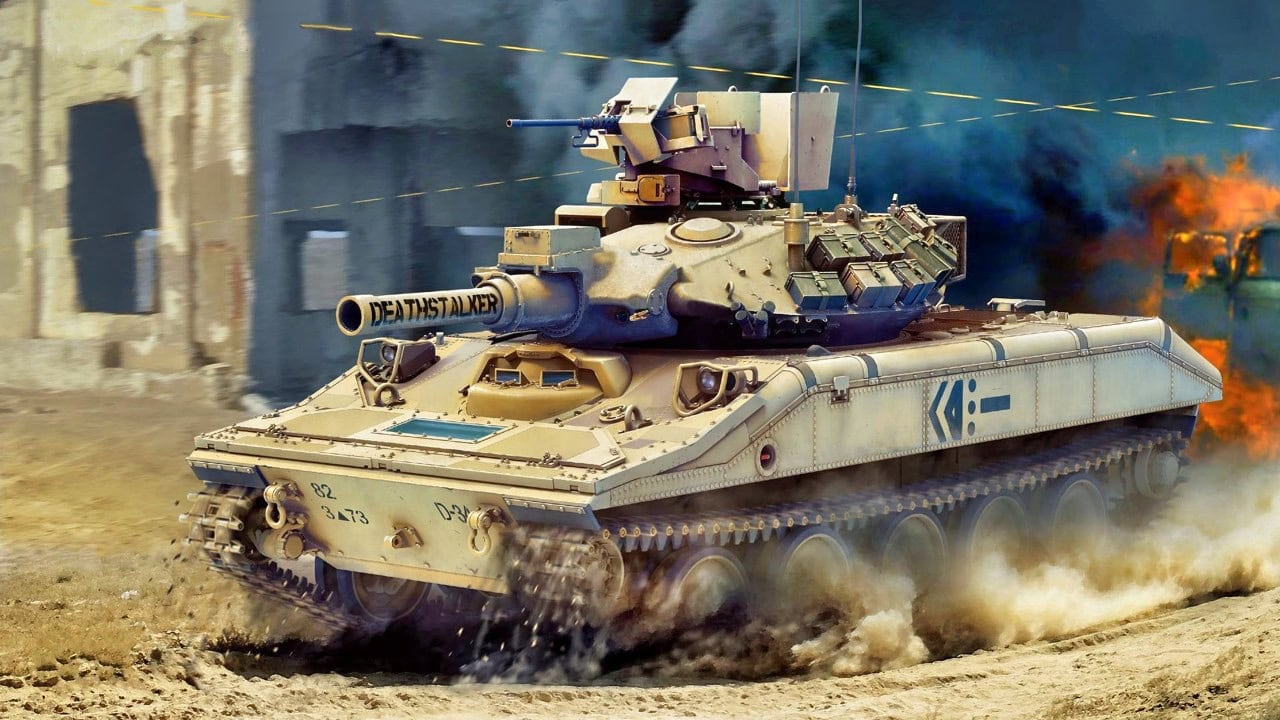Throughout the Cold War, numerous defense designs came and went that didn’t have much influence on anything. The M551 Sheridan was one such vehicle. Built as an armored reconnaissance and airborne assault vehicle, the M551 Sheridan was useful for its time, but it eventually became obsolete around the late 1990s.
Development and Design of the M551 Sheridan
The development of the M551 Sheridan dates back to the late 1950s. The US Army sought to develop a new light tank that could be air-dropped and provide substantial firepower.
The Ad Hoc Group on Armament for Future Tanks or Similar Combat Vehicles (ARCOVE) was established in 1957 to explore the potential of equipping tanks with guided missiles.
This department and its findings led to the development of the XM551, which would later become the M551 Sheridan.
The Sheridan was designed to be lightweight and amphibious, capable of being transported by aircraft and swimming across water obstacles. Its hull was constructed from aluminum alloy to reduce weight, while the turret was made of steel.
The vehicle was powered by a General Motors 6V53T, six-cylinder, turbocharged diesel engine, providing 300 horsepower and allowing for a top speed of 43 mph on roads.
One of the Sheridan’s most distinctive features was its main armament: the M81E1 152mm gun/launcher. This weapon could fire both conventional ammunition and the MGM-51 Shillelagh guided anti-tank missile. Another innovative aspect was the use of combustible cartridge cases for the gun rounds, although it later proved to be problematic.
Operational History
During the Vietnam War, the M551 Sheridan entered service with the US Army in 1969. The military rushed the M551 into combat service at the urging of General Creighton Abrams, the US Commander of Military Assistance Command Vietnam at the time. The Sheridan’s deployment in Vietnam highlighted both its strengths and weaknesses.
In Vietnam, the Sheridan’s mobility and firepower were valuable assets. It could traverse rugged terrain and provide significant fire support to infantry units. The soldiers on the ground often preferred the Sheridan to the M113 APCs, who were too lightly armed.
However, the harsh conditions of the Vietnamese jungle exposed several flaws in the Sheridan’s design. The aluminum hull offered limited protection against mines and rocket-propelled grenades, and the complex gun/launcher system proved unreliable.
Despite these issues, the Sheridan continued to serve in various capacities. After Vietnam, it was deployed to units in Europe and South Korea. The vehicle also saw action in the invasion of Panama in 1989 (Operation Just Cause) and the Gulf War in 1991 (Operation Desert Storm). In these conflicts, the Sheridan’s ability to be air-dropped and provide immediate fire support was highly valued in these operations.
Technical Specifications
The M551 Sheridan had a crew of four: a commander, gunner, loader, and driver. Its dimensions were relatively compact, with a length of 6.3 meters, a width of 2.8 meters, and a height of 2.9 meters. The vehicle weighed approximately 15.2 tons, making it light enough for airborne operations but at the cost of crew protection.
The vehicle’s suspension system used torsion bars, providing a relatively smooth ride over rough terrain. Its amphibious capabilities allowed it to swim at a speed of 3.6 mph, making it versatile in various combat environments.
The main armament, the M81E1 152mm gun/launcher, could fire a variety of ammunition types, including high-explosive anti-tank (HEAT) rounds and the MGM-51 Shillelagh missile. The Sheridan also featured a secondary armament of a .50 caliber M2 Browning machine gun and a 7.62mm M73/M219 coaxial machine gun.
Technical Difficulties
While the M551 Sheridan was sufficient for its time, many challenges prevented it from living a longer service life. The aluminum hull, while lightweight, offered limited protection against even contemporary anti-tank weapons.
This vulnerability was a major concern during its deployment in Vietnam, where it was susceptible to mines and RPG attacks.
Although advanced, the M81E1 gun/launcher system was plagued by reliability issues. The combustible cartridge cases used for the 152mm rounds were prone to misfires and other malfunctions. Additionally, while effective in theory, the Shillelagh missile system was complex and difficult to maintain in the field.
The Army made efforts to address these issues through various improvement programs. Modifications were made to improve the reliability of the gun/launcher system, and attempts were made to replace it with a more conventional weapon.
Despite these efforts, the Sheridan’s shortcomings remained a persistent problem.
Retirement and the “Light Tank” Issue
The M551 Sheridan was eventually retired from active service in 1996 without a direct replacement. The Army had planned to replace it with the M8 Armored Gun System, but this program was canceled late in its development. A modest fleet of Sheridans remained in service with the 82nd Airborne Division and the National Guard until retirement.
Overall, the M551 Sheridan was an alright vehicle. While it had some interesting designs, the Sheridan was plagued with issues that prevented it from making too much of an impact on future designs.
Currently, the US Army is working on another light “tank,” the M10 Booker, another vehicle plagued with doubts and controversies.
About the Author: Isaac Setiz
Isaac Seitz, a 19FortyFive Defense Columnist, graduated from Patrick Henry College’s Strategic Intelligence and National Security program. He has also studied Russian at Middlebury Language Schools and has worked as an intelligence Analyst in the private sector.

